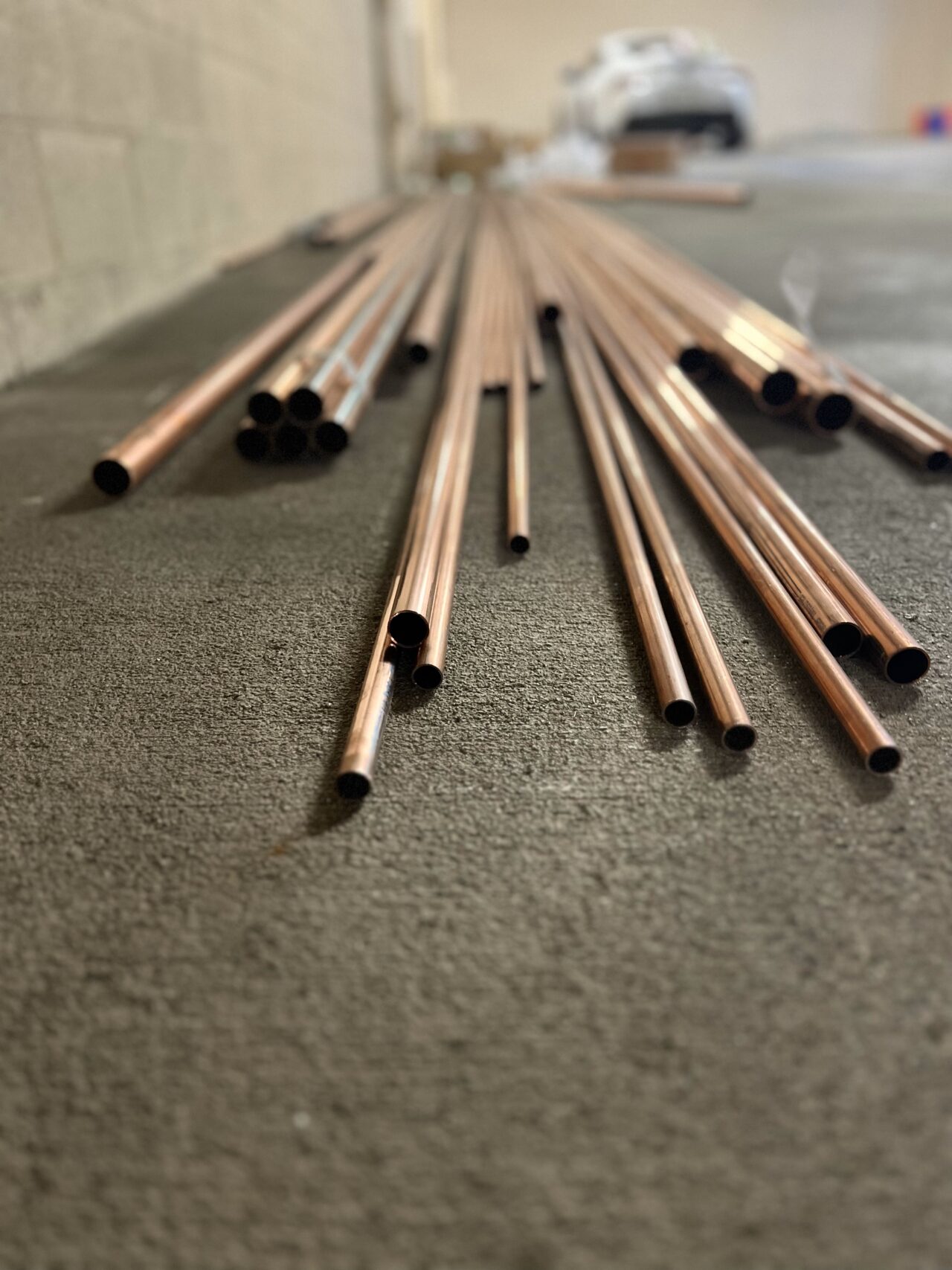If you’re embarking on a home renovation or plumbing project, understanding the basics of plumbing materials is essential. Among the various options available, copper pipes, particularly Type L, stand out for their durability, reliability, and ease of installation. In this guide, we’ll delve into what Type L copper piping is, its advantages, and where you might consider using it in your home.
What is Type L Copper Piping?
Type L copper piping is a specific category of copper pipe recognized for its thickness and strength. It is classified under the ASTM (American Society for Testing and Materials) standards and is identified by its distinct markings. The “L” designation refers to the thickness of the pipe wall, which is typically thicker than other types like Type M, making it more suitable for various applications, especially those requiring higher pressures.
Advantages of Type L Copper Piping
- Durability: Type L copper pipes are renowned for their durability and longevity. They are resistant to corrosion, making them suitable for both indoor and outdoor applications.
- Versatility: These pipes can be used for both hot and cold water systems, as well as for general plumbing purposes. They are also suitable for natural gas lines when properly installed.
- Reliability: Due to their robust nature, Type L copper pipes are less likely to develop leaks or bursts, providing peace of mind for homeowners and contractors alike.
- Ease of Installation: Unlike some other materials, copper pipes are relatively easy to work with. They can be soldered using a straightforward process, which is well-documented and widely understood among plumbers.
Where to Use Type L Copper Piping
- Water Supply Lines: Type L copper pipes are commonly used for both cold and hot water supply lines within residential and commercial buildings. Their resistance to corrosion ensures clean water delivery over long periods.
- Heating Systems: They are also ideal for use in heating systems where hot water circulation is necessary. The sturdy construction of Type L copper makes it suitable for withstanding high temperatures.
- Outdoor Applications: Because of their corrosion resistance, Type L copper pipes are suitable for outdoor plumbing applications, such as irrigation systems and connections to outdoor fixtures.
Installation Tips
- Proper Soldering: When connecting Type L copper pipes, ensure you use the correct soldering techniques to create leak-proof joints. This involves cleaning the pipe ends thoroughly, applying flux, and heating the joint evenly.
- Avoiding Kinking: Copper pipes can kink if bent improperly. Use a pipe bending tool or ensure gradual, gentle bends to avoid damaging the pipe.
- Supporting the Pipes: Support Type L copper pipes adequately to prevent sagging or undue stress on joints and fittings. This helps maintain the integrity of the plumbing system over time.
Conclusion
Choosing Type L copper piping for your plumbing needs offers numerous advantages, from durability and reliability to ease of installation. Whether you’re replacing old pipes or starting from scratch in a new construction project, Type L copper provides a robust solution that stands the test of time. By understanding its properties and proper installation techniques, you can ensure a smooth plumbing experience that enhances the efficiency and longevity of your home’s infrastructure.


Add Comment